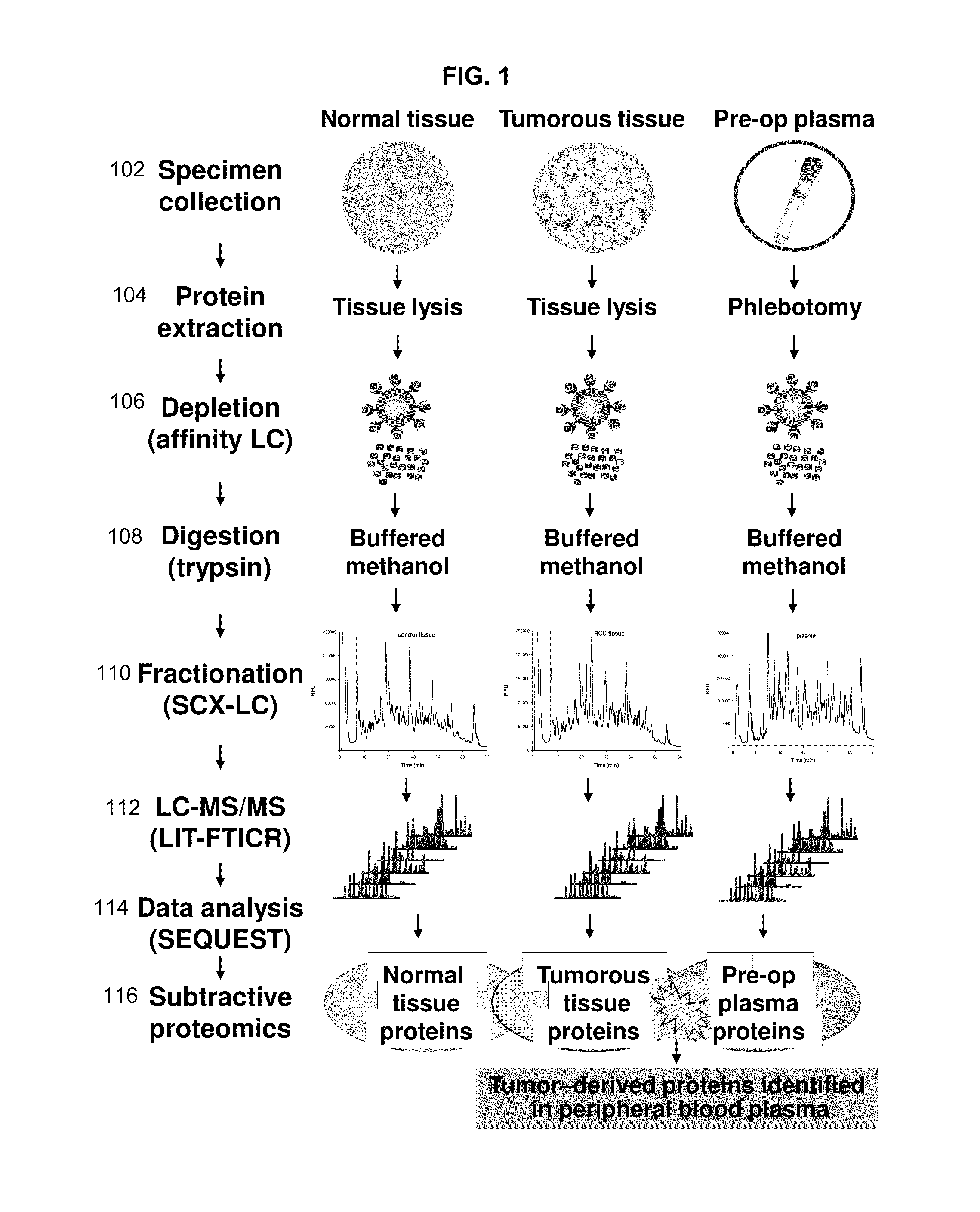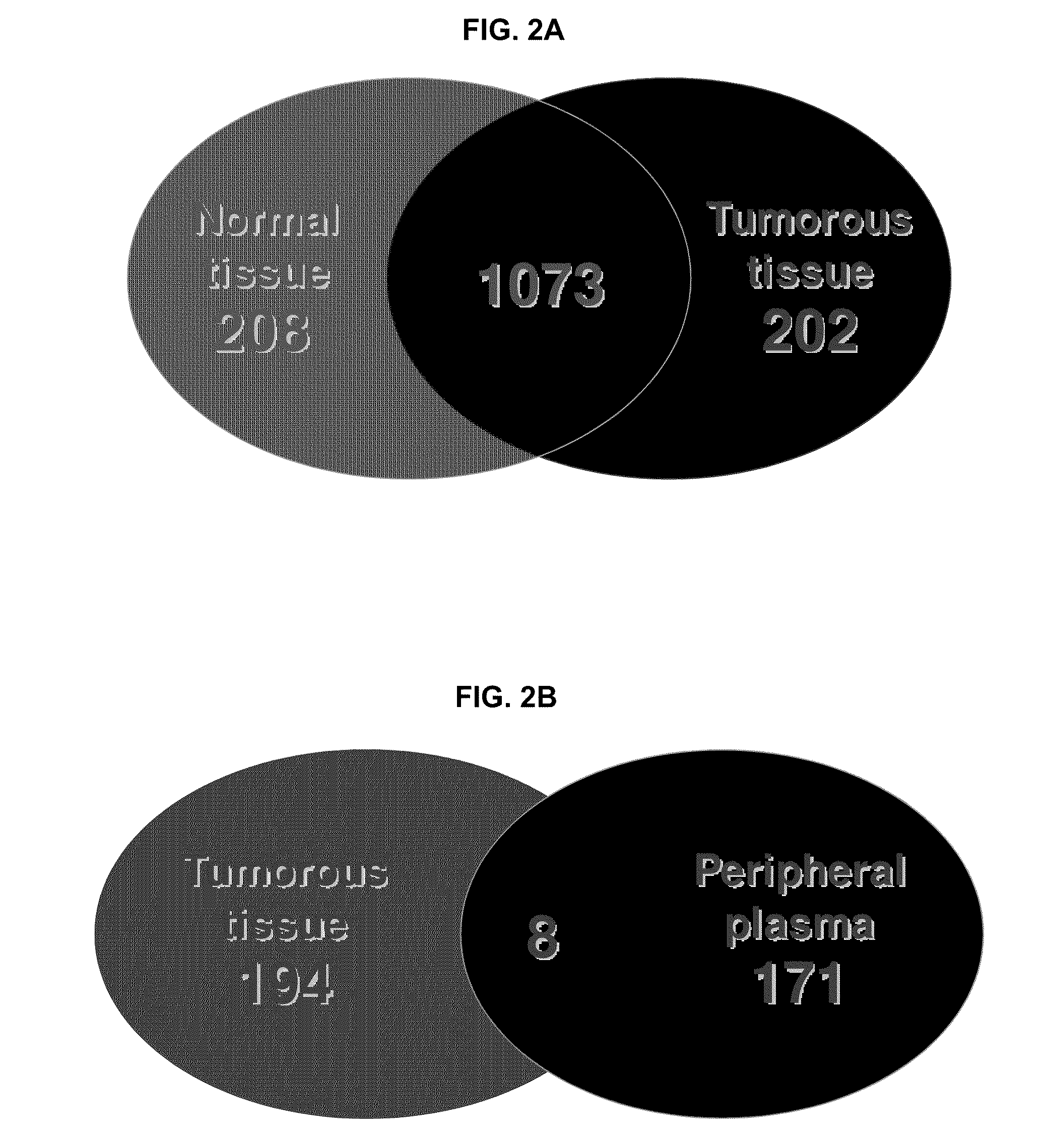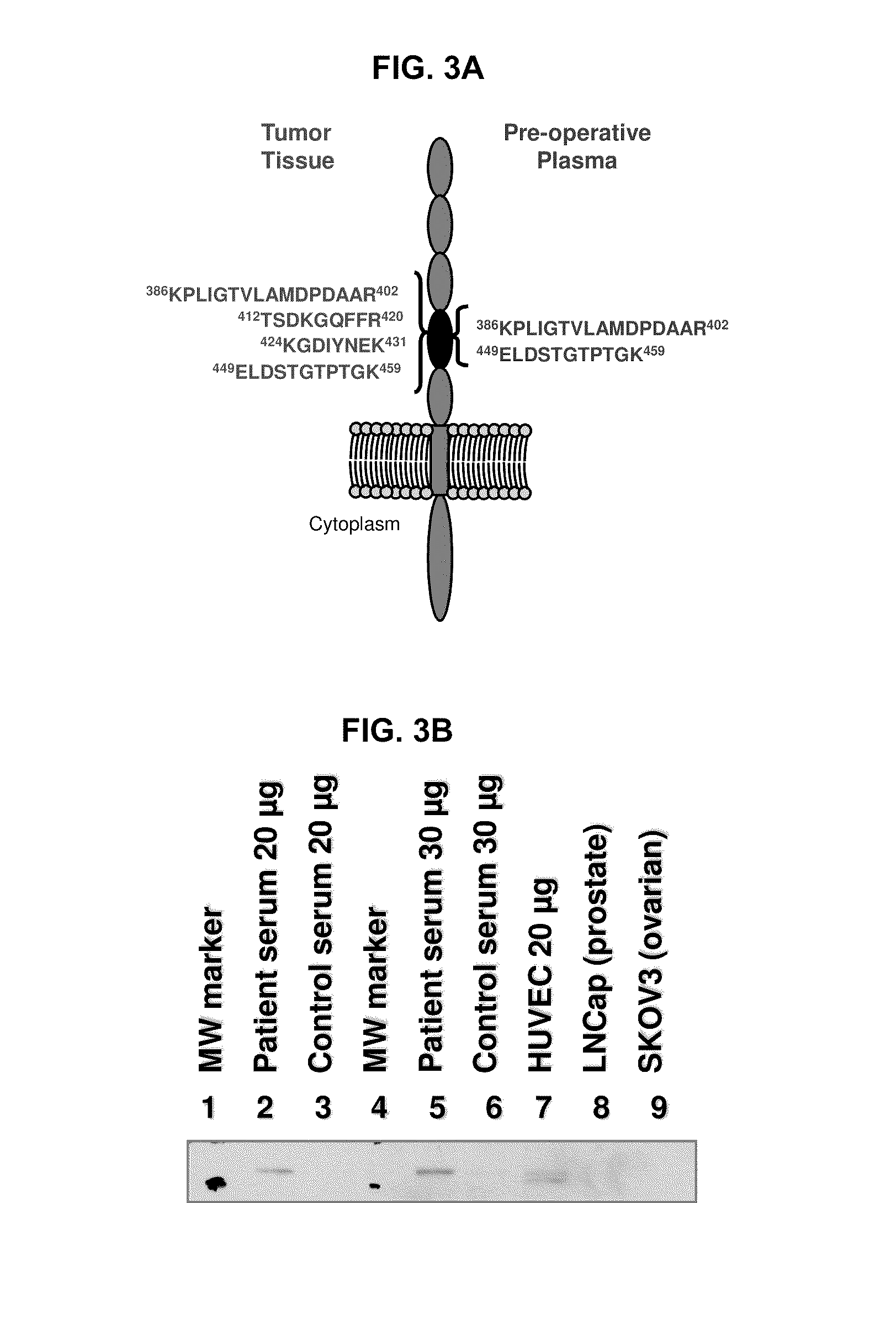Renal cell carcinoma biomarkers
a cancer and biomarker technology, applied in the field of tumor biomarkers, can solve the problems of ms-based cancer biomarker research/discovery, hindering subsequent bioinformatics and statistical analyses, and disappointing translation of proteomic assays to applicable diagnostic and/or prognostic tests in clinical oncology, and achieve the effect of facilitating cancer biomarker discovery
- Summary
- Abstract
- Description
- Claims
- Application Information
AI Technical Summary
Benefits of technology
Problems solved by technology
Method used
Image
Examples
example 1
Materials and Methods
[0324]Materials and reagents. MARS columns and MARS reagents were purchased from Agilent Technologies (Palo Alto, Calif.). SDS-PAGE materials and reagents were obtained from Invitrogen Life Technologies (Carlsbad, Calif.). Methanol and acetonitrile (HPLC-grade) were purchased from EMD Chemicals (Gibbstown, N.J.). All other chemicals and reagents, except for disclosed ones, were obtained from Sigma-Aldrich (St. Louis, Mo.).
[0325]Specimen collection and processing. Clinical specimens were procured by the National Cancer Institute Cooperative Human Tissue Network in accordance with current regulations and guidance issued by the Office of Human Subjects Review. Tumorous fresh frozen tissue, adjacent non-tumor fresh frozen tissue and plasma specimens were collected prospectively from a single patient diagnosed with the RCC using standard clinical procedures and stored at −80 ° C. Tissue specimens were procured during the surgery while peripheral blood plasma was coll...
example 2
Method of Identifying Tumor Biomarkers including RCC Biomarkers
[0329]This example describes a method of identifying tumor biomarkers using RCC as a model. This example also provides an RCC gene signature that can be used to diagnosis a subject with RCC. One skilled in the art will appreciate that similar methods can be used to identify biomarkers for other cancers, such as breast, lung, colon, or liver cancer.
[0330]Tumorous (0.57 grams) and non-tumorous tissue (normal adjacent kidney tissue, 0.56 grams) was obtained from a single patient and freshly frozen in liquid nitrogen along with 0.6 mL of patient's peripheral blood plasma. Since the plasma content of kidney tissue represents up to 22% of its weight the abundant protein depletion was applied to both tissue and plasma specimens. This step significantly contributed to dynamic range reduction and increased overall detection rate of low-abundant proteins. Subsequent tryptic digestion was performed in buffered methanol. The use of ...
example 3
Diagnosing RCC
[0338]This example describes methods that can be used to diagnose a subject with RCC.
[0339]According to the teachings herein, whether a subject has RCC can be determined by detecting differential expression of at least two RCC biomarkers in a sample obtained from the subject believed to have RCC or at risk of developing RCC. In an example, a peripheral biological sample, such as serum, is obtained from the subject who is believed to have RCC or at risk of developing RCC. The polypeptide levels of two or more of (such as all of) CDH5, CDH11, DDX23, WWC1, CHD4, NCOA6, PKM2, and VCAM1 in the biological sample is then evaluated using a protein array that includes different capture agents, most frequently monoclonal antibodies, each of which is capable of binding to one or more of the disclosed RCC biomarkers and controls, such as positive and negative controls. The amount of RCC biomarker protein measured in the biological sample is then compared to a reference value refle...
PUM
| Property | Measurement | Unit |
|---|---|---|
| survival time | aaaaa | aaaaa |
| survival time | aaaaa | aaaaa |
| survival time | aaaaa | aaaaa |
Abstract
Description
Claims
Application Information
 Login to View More
Login to View More - R&D
- Intellectual Property
- Life Sciences
- Materials
- Tech Scout
- Unparalleled Data Quality
- Higher Quality Content
- 60% Fewer Hallucinations
Browse by: Latest US Patents, China's latest patents, Technical Efficacy Thesaurus, Application Domain, Technology Topic, Popular Technical Reports.
© 2025 PatSnap. All rights reserved.Legal|Privacy policy|Modern Slavery Act Transparency Statement|Sitemap|About US| Contact US: help@patsnap.com



